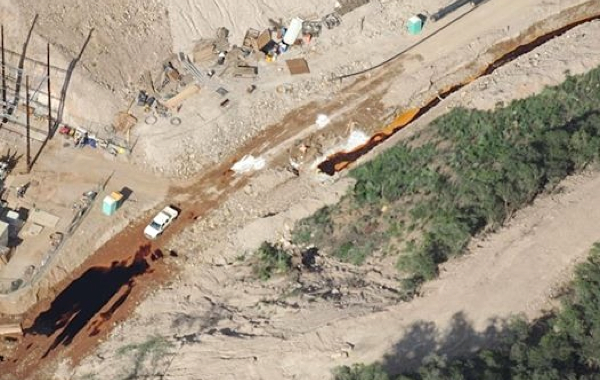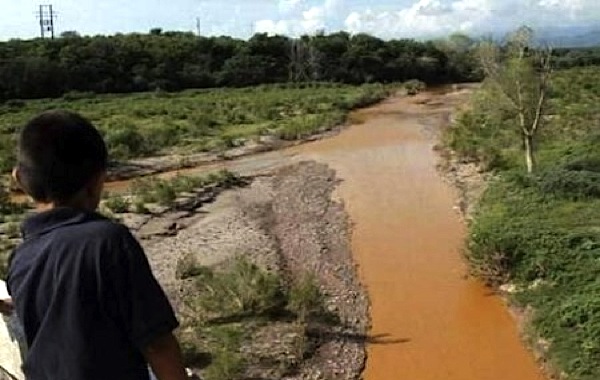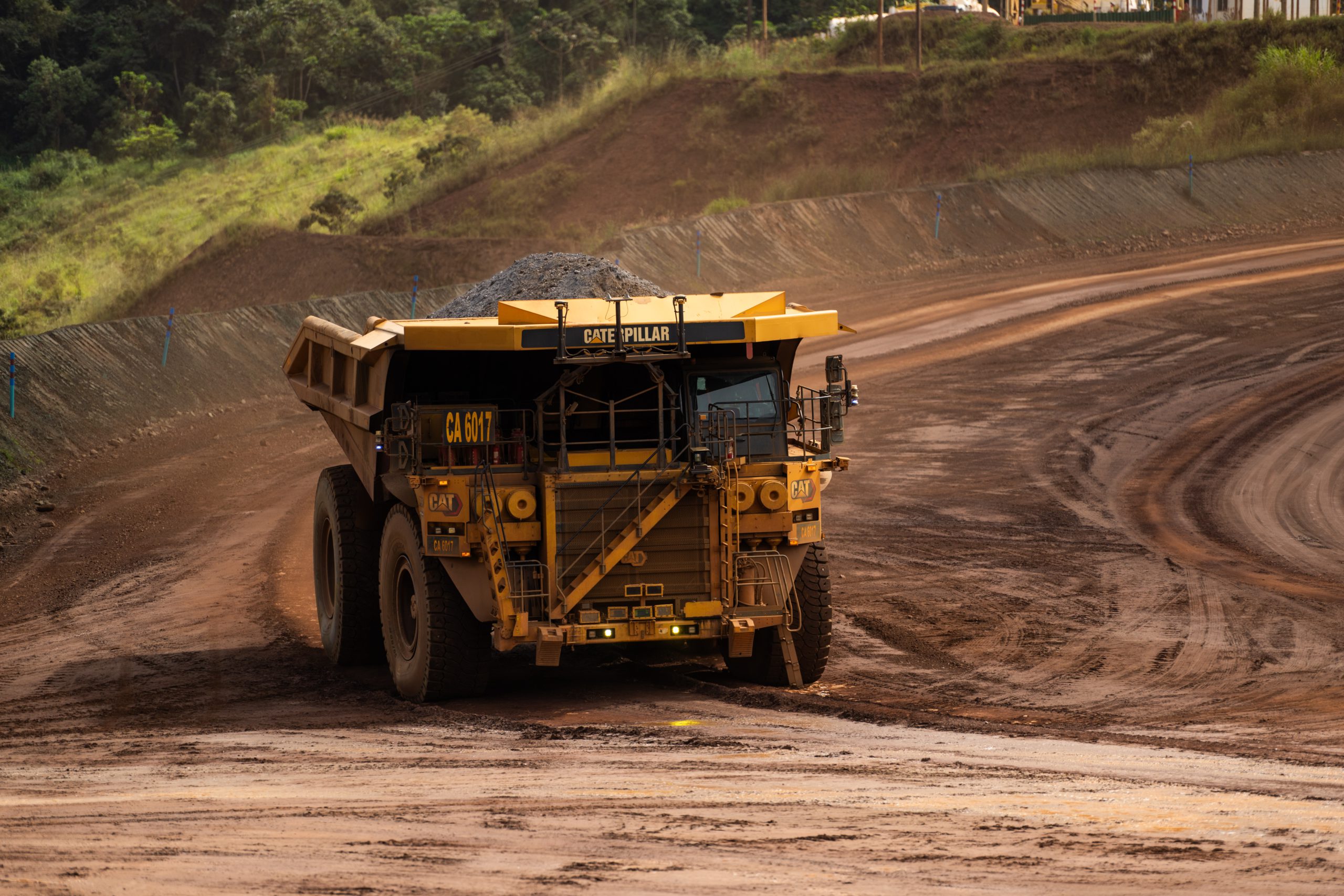Mexican copper mine ‘too slow’ to report spill
Grupo Mexico has denied reports claiming it did not immediately report a massive acid spill from its Buenavista mine in northern Mexico, just about 40 km from the U.S. border, allowing toxic waste to flow into a river that supplies water to hundreds of thousands of people.
In a press release posted by SoyCobre.com (in Spanish), the company said it proceeded to build a retaining wall to prevent the 40,000 cubic meters spill from spreading as soon as it detected the toxic leak.
But Carlos Arias, director of civil defence for the northern state of Sonora, told AP yesterday that residents detected the sulphuric acid leak downstream the next day, at which point the mine operators hadn’t notified state authorities.

The spill affected seven different municipalities, turning the 420-kilometer-long waterway orange. Credit: Twitter | @betoeliasm
“The company deliberately concealed the accident,” Cesar Lagarda, an official at the National Water Commission (PROFEPA), told La Jornada (in Spanish).
He added the agency found concentrations of arsenic and some metals that exceeded levels permitted in the waters of Sonora, adding that authorities continue to monitor chemicals water quality at multiple points along the river.
Lagarda also said the accident was due to lack of proper supervision at the mine, along with rains and construction defects.
Despite dumping lime into the river to neutralize the acidity of the leaked chemical, local reports the contamination has already killed fish and cattle in the area.
Water supplies from the river have been cut off to about 20,000 people.
Top mining state
Sonora is home to more than a quarter of Mexico’s mining industry and leads in gold, copper and graphite production.
Mexico’s federal government recently opened up the country’s vital energy sectors such as electricity generation and oil production to private companies.
In 2009 an American subsidiary of Grupo Mexico, Asarco, paid the U.S. government a record $1.79 billion to settle hazardous waste pollution in 19 states.
{{ commodity.name }}
{{ post.title }}
{{ post.date }}






3 Comments
Wilhelm Wilmers
For me as engineering geologist in Germany the way to handle the safety of damms for mining slurries in Amerca looks like playing a game in an unresponsible way. You have so many excellent engineers for dam construction – why not ask them? In Germany we have regulations for construction and maintenance even for small dams and they are supervised. I have never heard about an accident like Mount Polley or Buenavista and not about an accident of a waterdam. The construction principles are simple. Perhaps you should install and observe regulations for theses dams too. It is too dangerous, to give the safety into the hands of people, only responible to shareholder value.
Wally
Perhaps a good idea to draw a comparison between standards across the world in relation to dealing with engineering matters pertinent to mining projects?
In my opinion, there is no doubt that the engineers have a major part to play in terms of identifying the specific areas of improvement critical to avoiding the affects of incidents such as these.
“It is too dangerous, to give the safety into the hands of people, only responible to shareholder value”
I think I understand what you are saying here, as I have read that some people are putting forward the view that tailings ponds are dangerous, hence mining is the problem. I consider as you do that safety must be put in the hands of those that better understand the balance between social-economic development.
All too often when the cost of high standards is perceived as being too high, those standards slip and everyone picks up the tab.
Not being an engineer, I would ask how can there not be international standards relating to the avoidance of pollution, it will all end up in the sea?
Mining Engineer
After reading the original sources in Spanish, two details deserve emphasis: 1) it is a case of an unusual rainfall affecting during construction, in other words, when the structure is being built you have to rely on temporary diversion structures; and 2) the spill had copper in solution, so not only they will face environmental liabilities, but their production will be affected.
What it should be investigated is whether or not the storm criteria used was common industry practice, or if it was “budget-fitted”, i.e., too optimistic values applied to reduce costs. The idea is to delineate responsibility between Engineering and Management.